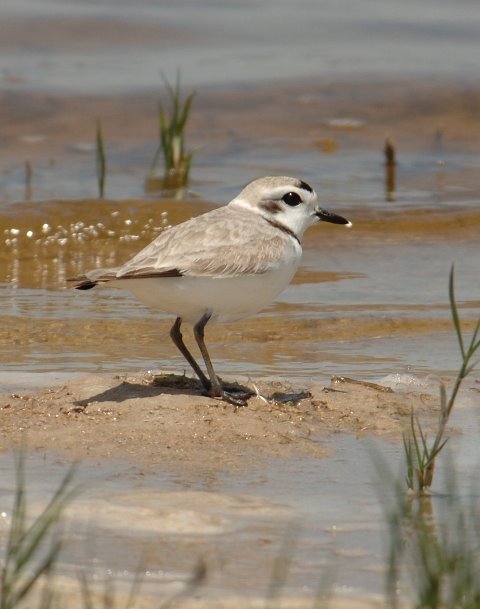.jpg) Although my work through Fermata has allowed me to travel to exotic areas of the world to see birds, I still get a thrill out of seeing something new in the neighborhood. For example, over the past few years Lesser Goldfinches have spread from the near westside of Austin into the central city. In my lifetime White-winged Doves, once limited to the south Texas border region, have spread across the state and have become urbanites (and the bane of my bird feeders). Apparently not all birds suffer from man's encroachment on the pristine habitats where many birds thrive.
Although my work through Fermata has allowed me to travel to exotic areas of the world to see birds, I still get a thrill out of seeing something new in the neighborhood. For example, over the past few years Lesser Goldfinches have spread from the near westside of Austin into the central city. In my lifetime White-winged Doves, once limited to the south Texas border region, have spread across the state and have become urbanites (and the bane of my bird feeders). Apparently not all birds suffer from man's encroachment on the pristine habitats where many birds thrive.An example of a bird that has apparently benefited from humans (other than the obvious Rock Pigeon and European Starling) is the Cave Swallow. This species only appeared in the U.S. at the end of the 1800s, not arriving in Texas until the early 1900s. When I first began birding in the early 1970s, this swallow's range was generally limited to the Texas Hill Country (where I live now). The bird originally nested in caves, often sharing space with bats (such as the Mexican free-tailed bats in this area).
,+4+Jun+09,+Windsor+bridge+(web).jpg)
Like the bats, this swallow has benefited from the development of artficial caves - bridged, tunnels, and culverts - as we have built our roads and habitations across the state. Now they extend well into east Texas, and have become a mainstay in many areas of this state. And just as the bats under the Congress Street Bridge here in Austin have become a part of urban life (and a tourism draw), the Cave Swallows this year (along with Great Horned Owls) have moved into my neighborhood.
These photos were taken this afternoon under the Windsor Street bridge down the hill from my home. The young swallows are well along in their development, and will be flying within days, I suspect. The Barn Swallows that nested here originally have been displaced (in itself an interesting process), and now we have around a dozen Cave Swallow nests, each abrim with nestlings.
.jpg)
Notice how the bottom of this nest appears different from the upper level. The bottom of the nest has grass and other fibers hanging out. This is a Barn Swallow nest from last year that has been reworked by the Caves. The top of the nest is almost exclusively made of mud (although in many places Caves use bat guano as well). As Paul Palmer points out, this is an excellent example of niche use sequencing (Barn Swallows as pioneers under the bridge, ultimately displaced by Cave Swallows). This year mostly Caves are nesting under the bridge, with one pair of Barn Swallows attempting to nest on the northern edge of the colony.
Do the Caves physically displace the Barns, or do they simply use old nests as an anchor for their new platforms? My belief is the latter. The Caves simply take advantage of the Barn Swallow efforts from previous years. Are the Caves unable to afix their nests to the smooth concrete surface under the bridge, and therefore depend on Barns to pioneer the colony?
+(web).jpg)
Here is a photo that raises additional questions. This appears to be an old Barn Swallow nest anchored to that of a mud dauber. If a Cave now takes advantage of this structure, it will be the third iteration (mud dauber to Barn Swallow to Cave Swallow).
Whatever the mechanism, the Cave Swallows appear here to stay. Welcome to the neighborhood!
+(web).jpg)









0 comments:
Post a Comment